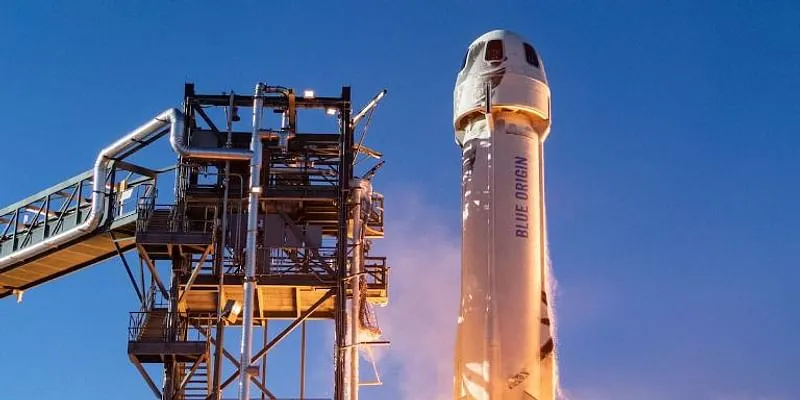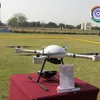NASA moon-landing tech hitches ride to space on Bezos rocket
Led by Amazon founder Bezos, Washington state-based Blue Origin is leading a team of companies to develop a lunar lander for astronauts. Elon Musk's SpaceX is also working on a lander, as is Alabama-based Dynetics.
Jeff Bezos' Blue Origin space company launched a New Shepard rocket for the seventh time from a remote corner of Texas on Tuesday, testing new lunar-landing technology for NASA that could help put astronauts back on the moon by 2024.
The entire flight barely skimming space with a peak altitude of 66 miles (106 kilometers) lasted just 10 minutes. The booster landed vertically back at the launch complex after liftoff, and the capsule followed, parachuting onto the desert floor.
Touchdown! New Shepard, here we go. I'm sorry you couldn't hear me pounding the desk in my mic, said launch commentator Caitlin Dietrich.
The capsule carried science experiments, including 1.2 million tomato seeds that will be distributed to school children around the US and Canada, and tens of thousands of children's postcards with space-themed drawings that will be returned to the young senders.
NASA's navigation equipment for future moon landings was located on the booster. The sensors and computer tested during the booster's descent and touchdown will hitch another suborbital ride with Blue Origin.
NASA Administrator Jim Bridenstine tweeted congratulations following Tuesday's demo. The space agency needs the ability to land precisely on the moon at specified locations, he noted.

File photo of Blue Origin’s New Shepard rocket system lifting off from West Texas in January 2019. Credits: Blue Origin (Source: Nasa)
Texas-based Southwest Research Institute had a magnetic asteroid-sampling experiment on board, as well as a mini rocket-fueling test.
Led by Amazon founder Bezos, Washington state-based Blue Origin is leading a team of companies to develop a lunar lander for astronauts. Elon Musk's SpaceX is also working on a lander, as is Alabama-based Dynetics.
NASA chose three teams in this early phase of the Artemis moon-landing program to increase the chances of getting astronauts to the lunar surface by the end of 2024, a deadline set by the White House.
Delayed three weeks by technical issues, this was the 13th New Shepard flight for Blue Origin. The first was in 2015. The rocket is named for the first American in space, Alan Shepard.
Tuesday's launch was the first in nearly a year for Blue Origin: The pandemic stalled operations. Blue Origin said its staff is maintaining social distancing and taking other safety measures.
Blue Origin said it needs a couple more flights before launching people tourists, scientists, and professional astronauts on short hops. The capsule has six seats and six windows, the biggest to fly in space.
Edited by Megha Reddy








